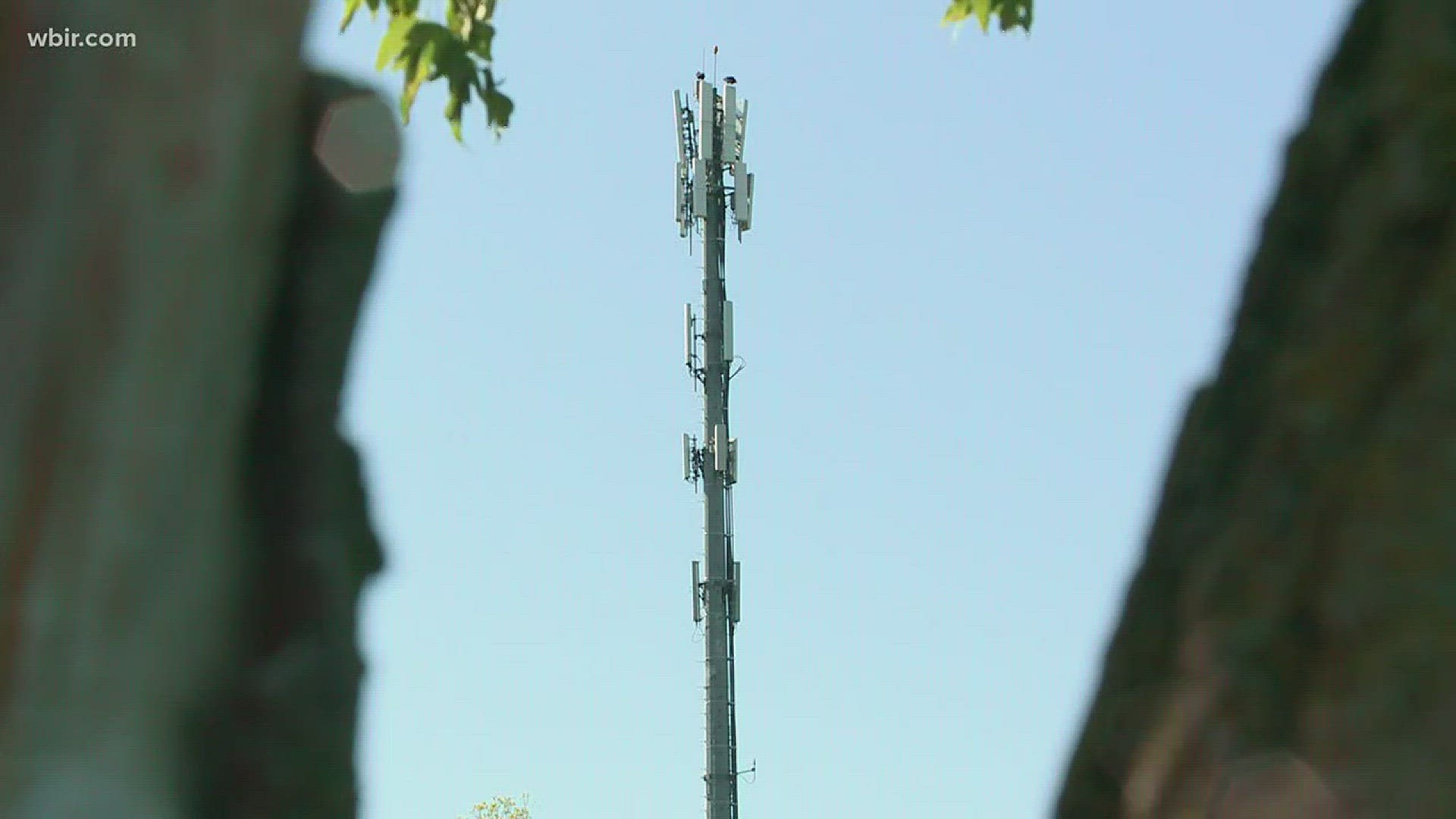Cell towers - those giant metal sentinels that have become an inevitable part of the East Tennessee landscape - will face greater regulations under a new ordinance being considered by Knox County Commission.
The commission this week at a Monday work session is considering a second and final reading of the ordinance, after the Metropolitan Planning Commission unanimously approved it in September. County commissioners signed off on it during a first reading Oct. 23.
Knoxville City Council also had to approve the new regulations.
Verizon Wireless representatives have spoken against the ordinance.
Cell towers, while necessary to provide modern-day communications, also have spurred opposition. Over the last seven years homeowners in several neighborhoods in North and South Knoxville have fought construction or replacement of towers, citing their ugly appearance and effect on property values.
Some 200 freestanding cell towers of one size or another are up around Knox County, and an estimated 216,000 Knox County adults own a cellphone, according to the MPC. New towers are a certainty as reliance on service grows.
Planners have been reviewing new rules with an aim toward standard, universal enforcement and construction for about a year. The current county ordinance dates to the early 2000s.
The new ordinance limits new tower heights to 200 feet, addresses the zoning districts where they're preferred and not preferred, encourages communications companies to share space on existing structures, and limits structure design to single towers that are called monopoles.
New towers "shall" be an option of last resort, according to the ordinance. The document ranks in order of preference where they're to be located, with industrial zones and business parks ranked first.
Anyone wanting to build a new tower also would have to show that nearby existing towers within a mile aren't feasible for use.
Residential areas and historic districts are the least preferred areas. Installation near scenic highways also would be discouraged.
Anyone wanting to build in a residential area would face MPC review.
Applicants wanting to install a tower within a residential or historic zone would face extra hurdles under the ordinance. For example, they would have to identify other possible spots within a mile of the proposed site and explain why they tried and were unable to make any of those spots work for a tower, the ordinance states.
New towers in industrial zones would be limited to 200 feet. Towers in areas zoned for office space would be limited to 150 feet, the ordinance states. Towers approved after review in residential areas would be limited to 125 feet.
The ordinance lists several situations in which towers would be exempt, including Federal Communications Commission-licensed ham radio towers, government-owned towers erected in an emergency or temporary towers put up for sports or news coverage, pending county approval.

